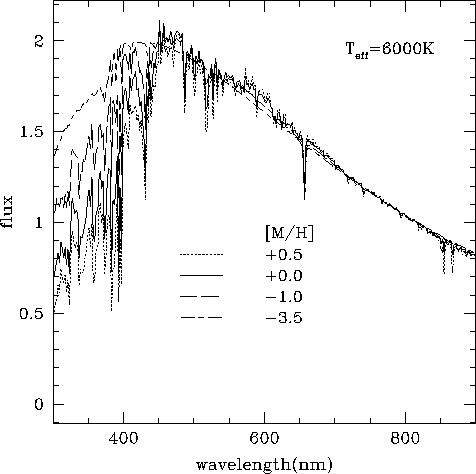 so that for
every Iron atom there are 20,000 Hydrogen atoms.
so that for
every Iron atom there are 20,000 Hydrogen atoms. |
|
|
|
|
|
|
|
|
|
|
|
|
(C, O, Mg, Si, Fe, etc: "metals") |
|
|
and we define these quantities such that X+Y+Z=1
A different way of measuring a star's chemical composition is by the Iron(Fe)-to-Hydrogen(H) ratio:
for the sun,  so that for
every Iron atom there are 20,000 Hydrogen atoms.
so that for
every Iron atom there are 20,000 Hydrogen atoms.
We measure this value for other stars relative to the sun using a quantity called [Fe/H]:

Defined this way the Sun has a metallicity ![]()
Question: What does it mean to have a metallicity:
In the 1940s, Walter Baade introduced the concept
of stellar populations:
|
|
|
|
|
|
|
|
|
|
|
|
So any model for how the Galaxy formed and evolved must
explain why there are different populations of stars in
different parts of the Galaxy.
|
Note that metallicity also correlates with color:
Why?
So lots of things affect colors:
|
 Example of line blanketing
|